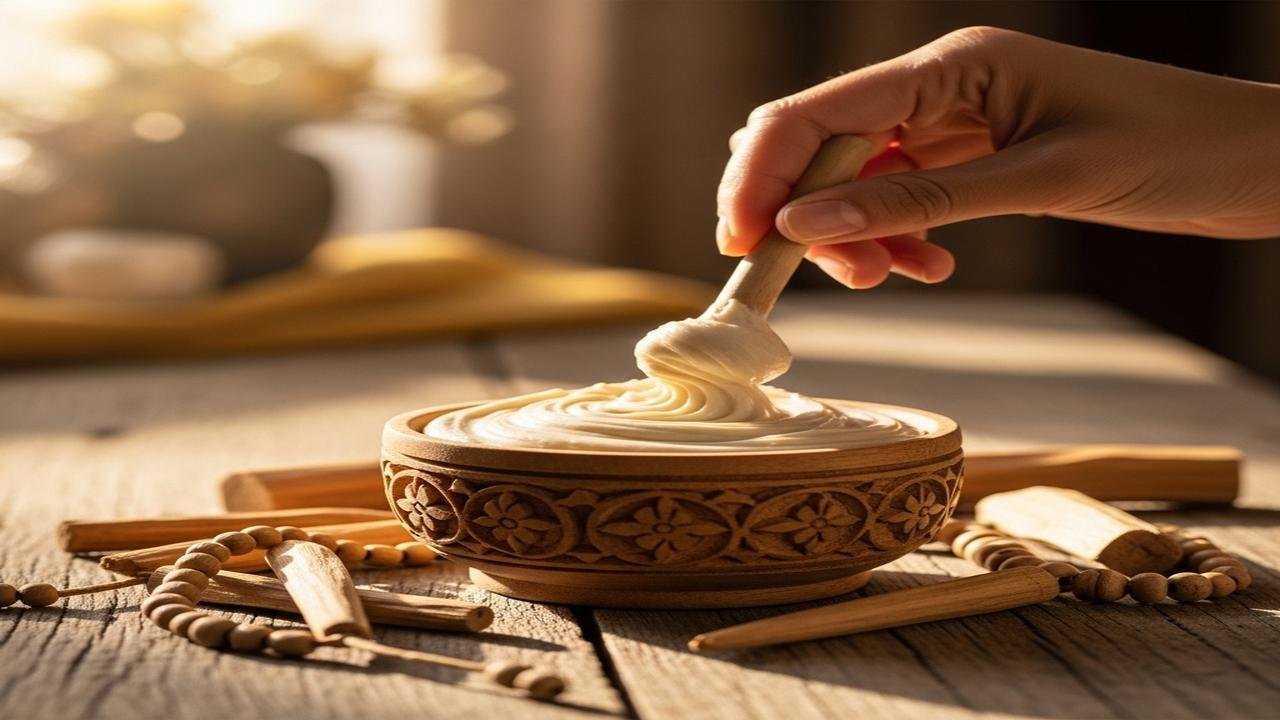Why Sandalwood Paste Is the Quietest Act of Devotion

When I was a child, I remember the cool, soft touch of sandalwood paste on my grandmother’s palm and the gentle, sweet perfume that filled our home. She would whisper, “We offer this to the lord to cool his heart,” and together we would place a white marble bowl of paste before the little brass idol on our shelf. That simple ritual carried a world of meaning — a blend of love, tradition, and silent prayer.
Sandalwood paste, or chandan, has been part of Indian worship for centuries. It is more than a fragrant paste; it is a living symbol of devotion. In temples and homes alike, priests and devotees smear it on murtis (idols), temple doors, and their own foreheads. The act looks small, but it holds deep cultural and spiritual layers.
Why sandalwood? Part of the answer lies in its nature. Sandalwood comes from a slow-growing tree known for its fine grain and soothing scent. The paste is cool to the touch and calming to the mind. In a hot, restless world, offering something that cools and calms is a way of offering peace. Spiritually, this cooling quality becomes symbolic: just as the paste cools the body, it cools the heat of ego, anger, and restlessness in the heart.
There are several reasons sandalwood paste is offered. Each reason is like a small bead on a rosary, holding a story:
- Purity and sanctity: Sandalwood is considered pure and auspicious. Applying it marks the idol and the space as sacred.
- Sensory devotion: The fragrance pleases the senses and helps devotees focus, making prayer a full-body experience.
- Cooling the mind: In spiritual terms, sandalwood cools the passions and steadies the mind for meditation.
- A mark of honor: Smearing chandan is a form of alankara (decoration); it is how we honor the divine presence.
In many stories and scriptures, sandalwood appears in rituals, festivals, and royal ceremonies. Kings and sages have used it in offerings, seeing it as fit for both gods and noble guests. Over time, the practice became woven into daily life: brides wear it on wedding days, children receive it as a blessful tilak, and temples keep it ready for daily worship.
The way sandalwood paste is prepared and used also tells of care and devotion. The heartwood is grated or powdered and mixed with water, rose water, or sandalwood oil to make a smooth paste. Sometimes small prayers are murmured as it is made — a gentle reminder that the offering grows from intention, not just ingredients.
Today, the practice carries modern meanings too. Sandalwood shows how tradition and sustainability must meet. Natural sandalwood is rare and precious, which teaches us to offer with reverence and minimal waste. Many temples and households now prefer ethically sourced chandan or plant their own sandalwood trees, turning worship into a promise to protect nature.
When we apply sandalwood to an idol or our forehead, it is not merely a ritual. It is a moment of connection — a touch that says, “I remember you.” The fragrance becomes a bridge between the visible and the invisible, calming the mind so that devotion may arise naturally.
May the gentle scent of sandalwood remind us to cool our impatience, honor what is sacred, and offer our best, however humble. In that quiet offering, devotion finds its voice.
Conclusion: In a world that moves quickly, sandalwood teaches a simple truth: devotion is a cooling touch — deliberate, loving, and reverent. Let each small offering be a step toward a calmer heart and a kinder life.
